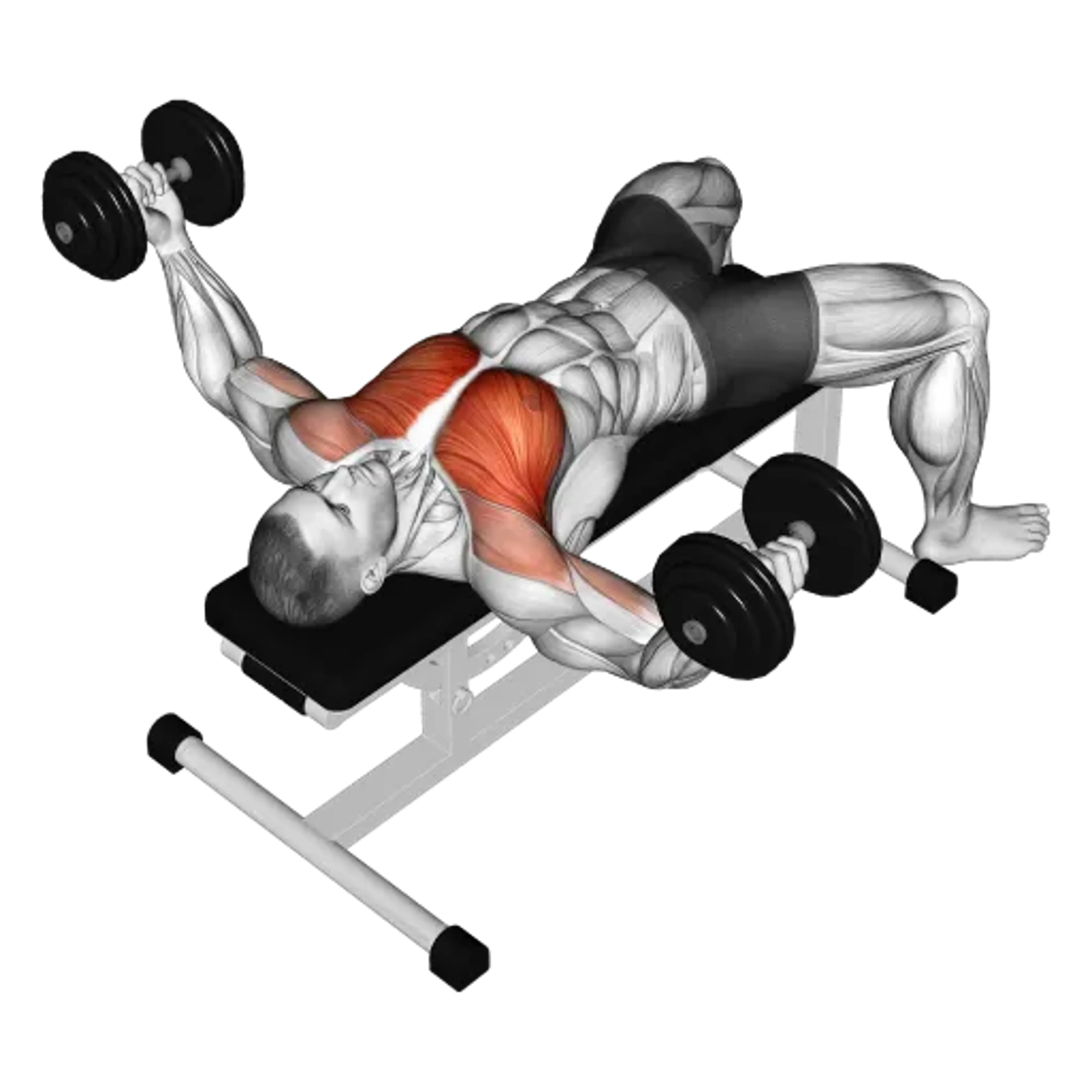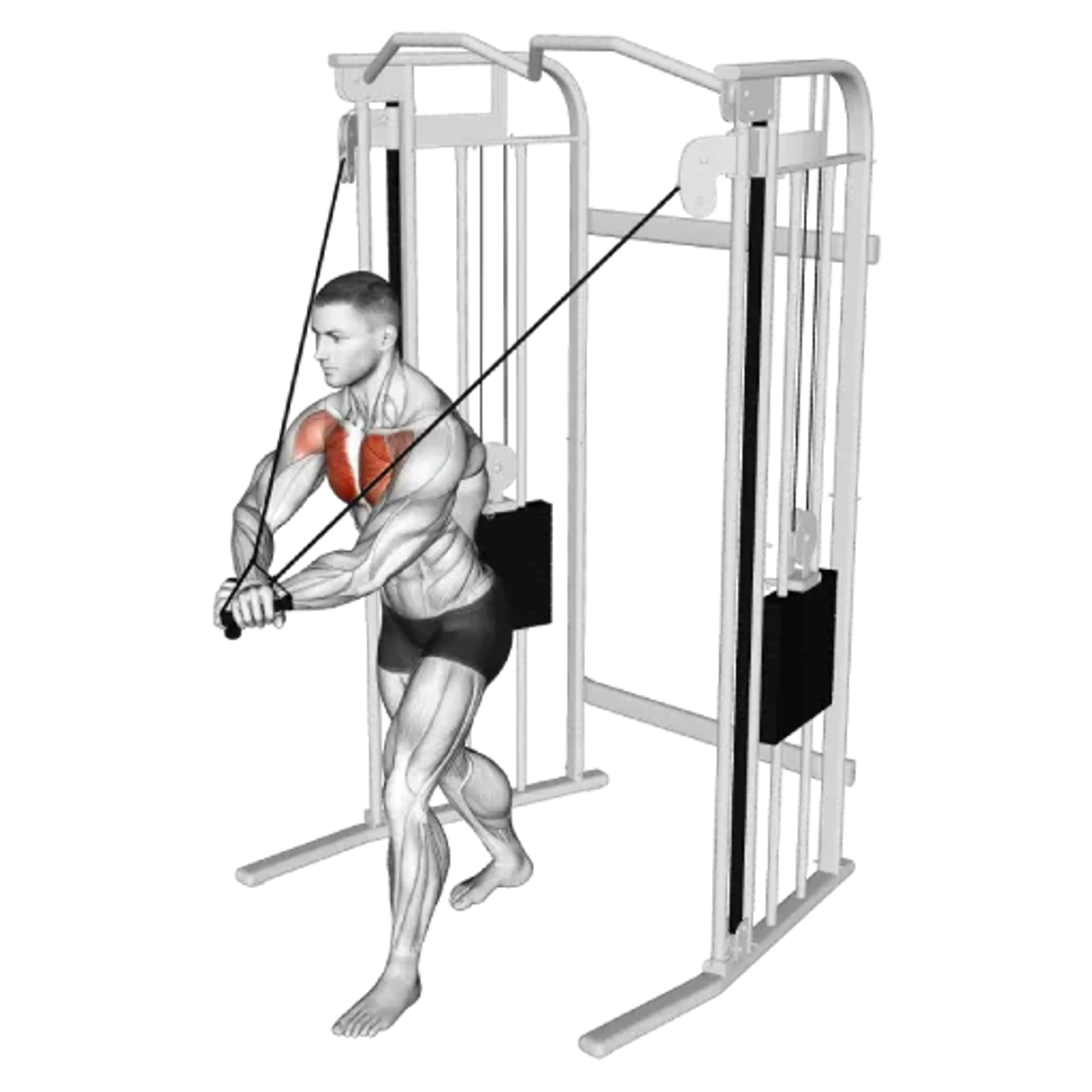Cable Lying Fly

Overview
- Primary Focus:
- Chest.
- Equipment:
- Cable and bench.
- Difficulty:
- Beginner.
General Information
Cable Lying Fly is an isolation exercise that primarily targets the chest and also engages the front shoulders. It is a beginner-level movement performed on a flat bench between cable stacks, providing a consistent horizontal line of pull and constant tension across the range.
Compared with dumbbells, cables make it easier to keep tension near the top and reduce joint stress at the bottom. This makes the lying fly a solid choice for hypertrophy, accessory work, and chest activation days with moderate loads.
Pulleys set roughly at bench height create a comfortable horizontal arc. Handles are common; cuffs can remove grip from the equation and keep forearms relaxed for a more chest-driven motion.
Expect a noticeable stretch when the hands open just past shoulder line and a smooth squeeze as they meet over the mid-chest. Keep the elbows slightly bent and the path consistent to maintain pec tension rather than pressing the load forward.
Muscles Worked
- Pectoralis Major
- Primary
- Deltoid
- High
- Biceps Brachii
- Low
- Serratus Anterior
- Low
Instructions
- Place a flat bench centered between the cable columns; set pulleys about level with your shoulders when lying down, then attach D-handles or cuffs.
- Choose a light to moderate load you can control smoothly without pressing; lie back and set shoulder blades down and back on the bench.
- Start with arms out to the sides just below shoulder level, elbows softly bent (15-30°) and fixed; wrists neutral and relaxed on the handles or cuffs.
- Sweep the hands in a wide arc toward the mid-chest, thinking of bringing your biceps toward each other rather than pushing forward with the triceps.
- Pause softly when the handles meet over the chest; keep shoulders depressed and neck relaxed to avoid shrugging.
- Return along the same path under control until you feel a stretch across the chest without shoulder discomfort or losing scapular position.
- Repeat for the target reps; keep the elbow angle consistent and the path symmetrical left to right throughout the set.
Common Mistakes
Injuries
Cable Lying Fly is a low risk exercise when performed with proper technique.
Common issues are overstretching at the bottom and letting the shoulders round forward. Keep the range comfortable and the shoulder blades gently retracted and depressed to protect the joint.
Use a small, fixed elbow bend to limit stress on the biceps tendon. If you feel pinching, reduce load, raise pulley height slightly, or trim the bottom range until the motion feels smooth and pain-free.
Progress by adding reps, tempo control, or a brief pause at peak contraction. Stop immediately if you notice sharp pain, tingling, or shoulder instability.
Alternative Exercises

Frequently Asked Questions
- Q: How is this different from a dumbbell fly?
Cables keep tension more constant, especially near the top, and allow easier setup and adjustments. Dumbbell Flys work well but have less tension at the top and can be harder on the shoulders at long ranges.
- Q: Where should the pulleys be set?
About level with your shoulders when lying down creates a comfortable horizontal arc. Small adjustments up or down can fine-tune comfort and chest emphasis.
- Q: Can this replace bench pressing?
It complements pressing but does not match the loading potential. Use it to build mind-muscle connection and hypertrophy alongside presses when possible.
- Q: What rep range should I use?
Aim for 10-15 controlled reps per set with a brief pause at peak contraction. Keep 1-2 reps in reserve to maintain form and shoulder comfort.
Overview
- Primary Focus:
- Chest.
- Equipment:
- Cable and bench.
- Difficulty:
- Beginner.




